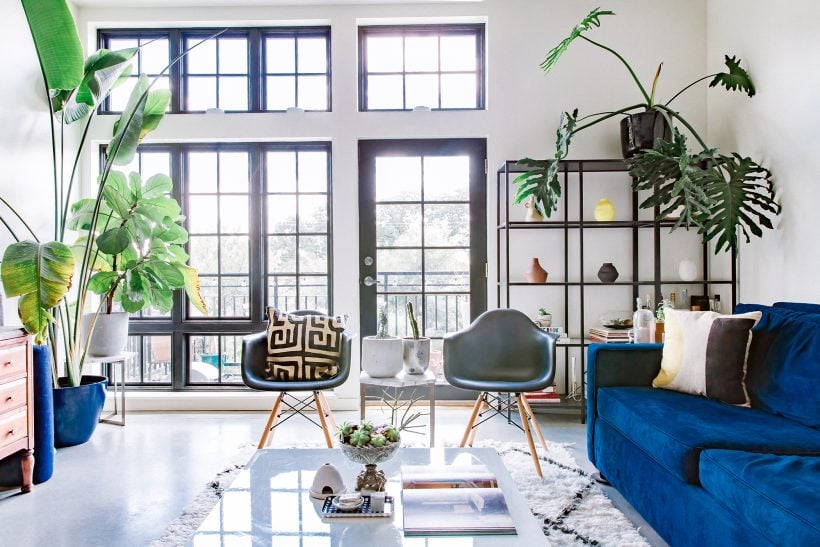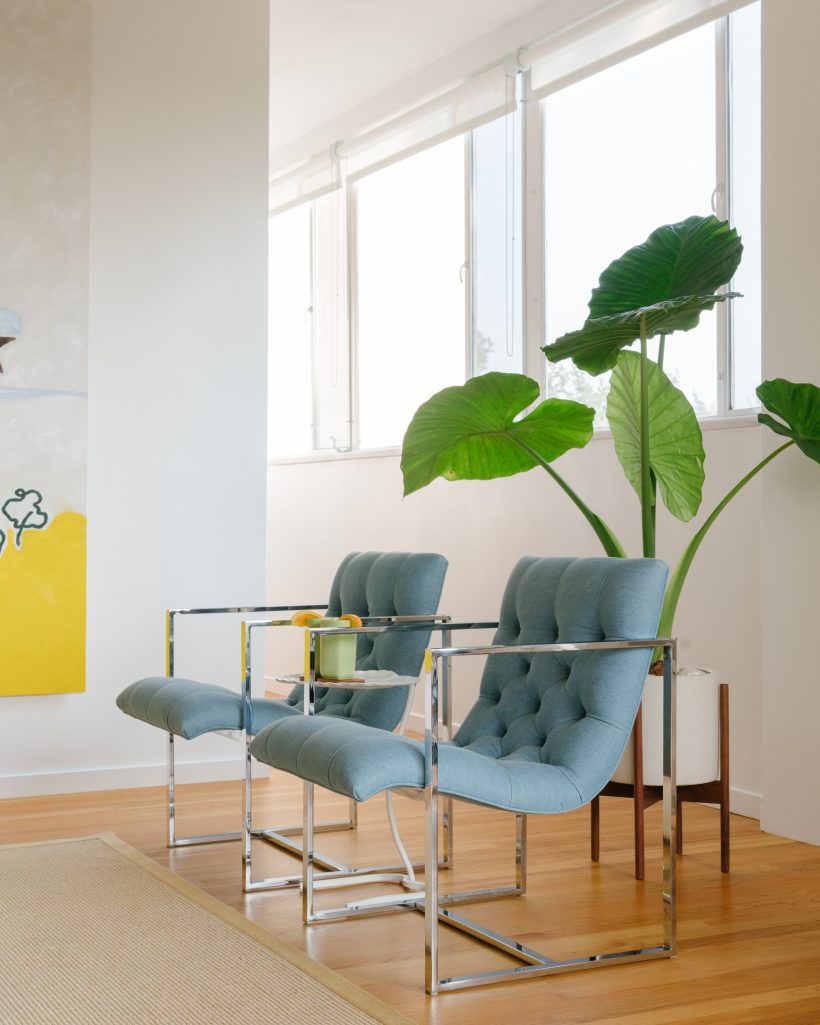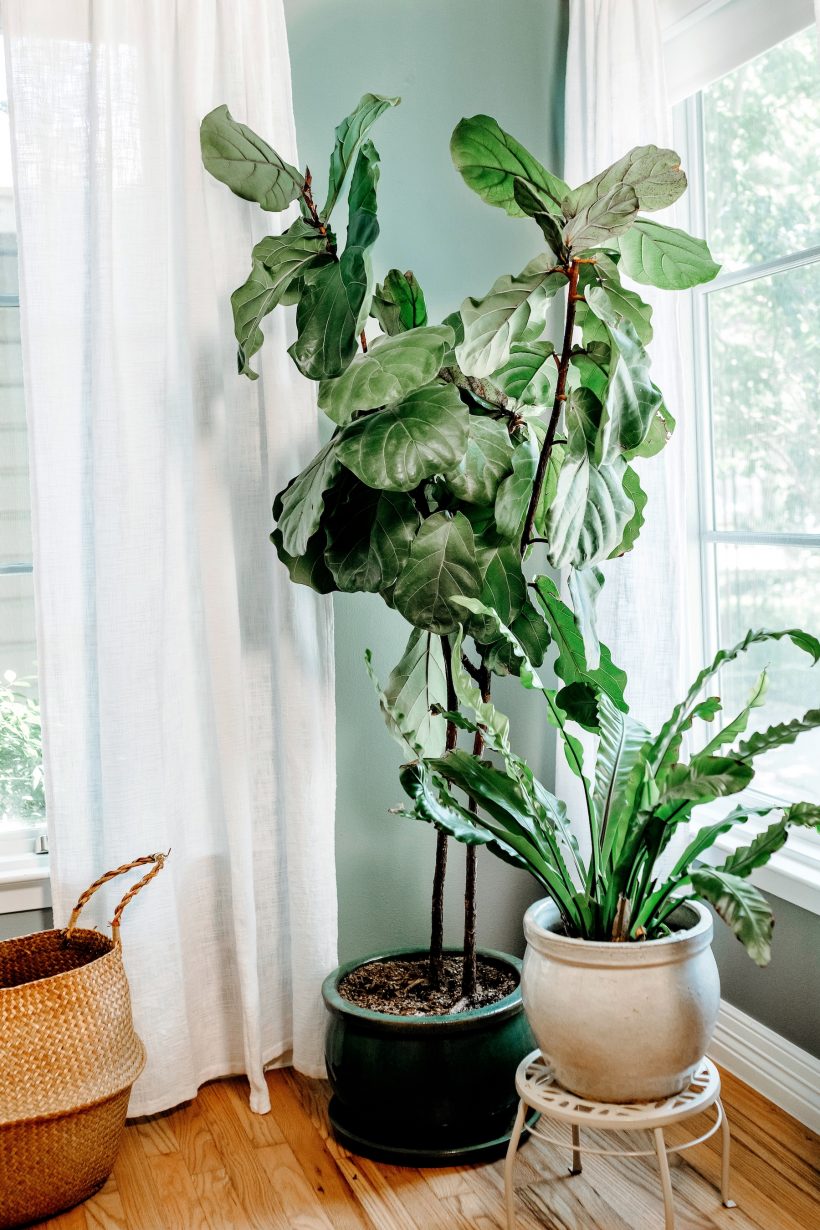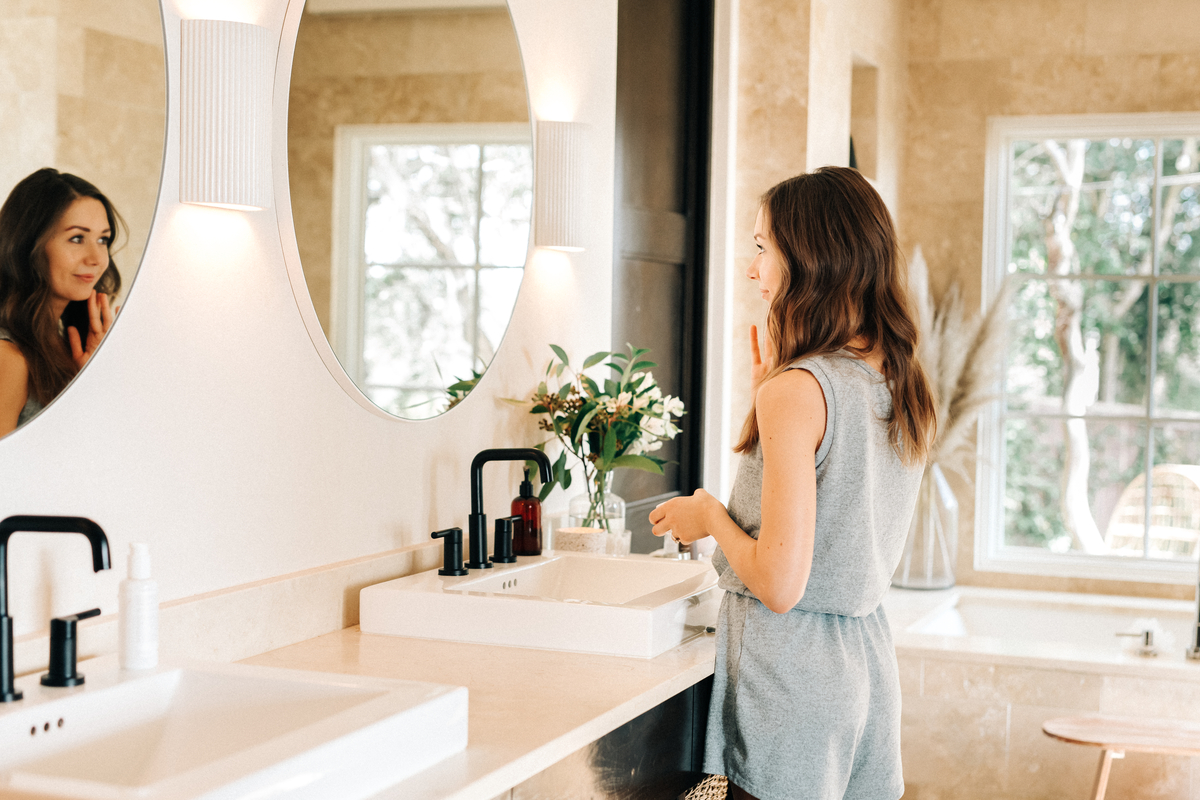4 Designer-Approved Tips for Making Your Home a Lush, Plant-Filled Oasis
Maximum impact, guaranteed.

In these uncertain, often overwhelming times, I’ve found solace in my houseplants. There’s an undeniable joy that comes from a pristine fiddle leaf fig or the moment of repose found while taking in a monstera. Even a tiny ivy can offer a big-time reprieve. Green friends abound in my home. Owning ample plants is beneficial, but it can be rife with the potential for clutter. (Too many haphazardly arranged houseplants and suddenly a living room mirrors a roadside nursery.) That’s why I embarked on a mission to learn how to arrange plants in a living room.
Finding the wisdom to decorate with plants was surprisingly easy. Over the last few years, nearly everyone is honing their indoor green thumb. I’m basing this claim on my friends’ homes and the market. Walk around any neighborhood in my city of San Francisco and you’ll find handfuls of shops selling vibrant pink philodendrons and glossy pothos. I fell in love with my latest find at Little Trees in San Francisco’s Richmond neighborhood. Owner Kathy Ho fills her tiny verdant boutique with such a considered eye (and she treats her green babies with incredible care) that I had to tap her design wisdom for how to best arrange houseplants in a living room.
Here, I ask Ho and Bloomscape gardening and design expert Lindsay Pangborn how to approach accenting my living room with plants. I learned that putting some thought into how and where I place my potted friends can significantly increase the joy I glean from them.
“Plants bring you relaxation, peace, and joy when you spend time with them, either when watering them, witnessing them having a good morning sunbath, or watching a new baby leaf come up,” Ho tells me. “It’s good Feng Sui to have plants in your house—to feel the balance and the positive good vibes.”
Feature image by Michelle Nash.

Image by Laura Alexandra
What Are the Best Ways to Arrange Plants in a Living Room?
#1: Small Groups
Ho suggests compiling houseplants in groups of two or three. This punctuates the room with calming moments of greenery and avoids any clutter. To keep care easy, she suggests grouping houseplants that require the same care. “This makes it easier to water them, plus they provide one another with some moisture, which plants love.”
#2: Cascading
Trailing plants—i.e. arranging them from high places to low—provides a reason to look up, which is one of the greatest tricks for making a small living room look bigger. This is one of Ho’s go-to looks she suggests for clients. Her advice: Pair a favorite plant and vase and put it on top of your bookshelf, TV stand, or hutch, allowing the leaves to fall down as the plant grows.
#3: Hanging
Much like the cascading look, hanging pots bring the eye up—and they allow you to make the most of the space you have, says Pangborn. This look is simple. Install a hanging pot into the ceiling, where real estate is usually unlimited, or hang from a sturdy vessel such as a stud-mounted wall hook.
Image by Danielle Sabol
#4: On the Floor
A common houseplant décor mistake is neglecting to use floor space. Pull from the rule of two or three and group plants in an empty corner or next to the sofa. If vertical space allows, place a taller indoor houseplant, such as a fiddle leaf fig or avocado tree, in a generous pot on the floor. These types of bigger houseplants “create instant impact in a room thanks to their size,” says Pangborn. “And they easily fill out a corner or a bare wall.” Pro tip: Make sure to allow room between a taller plant and any wall art so the two don’t aesthetically compete.
#5: The “Jungle” Look
If you love the look of lots of plants, Pangborn says to go with it—but vary the sizing and shape. “Choose plants with contrasting leaf shapes and colors to maintain visual interest—for example, combining a bold-leafed monstera plant, burgundy rubber tree, and a lush, fine-textured Kimberly Queen fern makes a show-stopping trio,” she says. As Ho adds, you can build your own personal jungle in your home!
Image by Justina Blakeney
How Many Plants Is Ideal?
This is the ultimate question. And before I get to Ho and Pangborn’s takes, I’ll make this rallying cry: Let your plant flag fly! Any number is ideal if it brings you joy. The essential thing to consider isn’t how many plants you should have, but how well you can tend to them.
Here’s what to consider:
#1: Space and Flow
Plants need ample room to show their beauty, says Ho, who implores anyone opting for many plants to ensure they’re not crowded. Check to see each plant has at least several inches between its sister to allow for healthy growth and extension toward the light.
#2: The Type of Plant
Extending upon Ho’s above advice, some plants prefer drier air, which requires giving them even more space to promote airflow and keep their foliage healthy, informs Pangborn. “Succulents and plants with semi-succulent leaves, like the whale fin sansevieria, are examples of plants that do best slightly spaced out from one another.”
On the other hand, plants native to tropical rainforest locations thrive in higher humidity situations, Pangborn continues. This includes the heartleaf philodendron and the stromanthe triostar, both of which do great in groupings, “trapping the moisture released from plants and creating a humid microclimate.”

Image by Steven Karlisch
What Are the Best Plants for a Living Room?
One’s home decor is ultimately dependent on personal preferences, says Pangborn. But plants of all sizes can be incorporated into a living room space for additional depth, color, and texture. Some of the best ones for the living room specifically include:

Image by Michelle Nash.
One Last Tip: Just Go with It!
Plants should complement your space—and life—and never compete with your flow, Pangborn reminds me. “They can add so much beauty, but if you find yourself stressed about the care requirements or constantly having to shuffle plants around to make room for your daily activities, don’t feel guilty about changing it up,” she says. In the warmer months, you can always bring some outdoors. And if you find one doesn’t bring you the joy it once did, there’s no shame in re-homing a houseplant. Having greenery in your life is all about keeping the energy positive.

 Lynk
Lynk 































